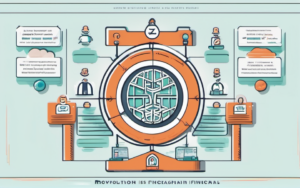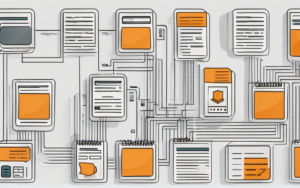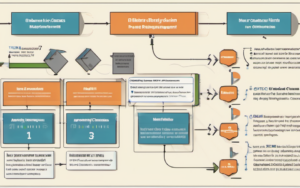The world of technology is rapidly evolving, and one of the most exciting advancements is the rise of blockchain technology. With its decentralized and secure nature, blockchain has the potential to revolutionize various industries, from finance and healthcare to supply chain management and gaming. If you’re a developer looking to tap into this transformative technology, building a blockchain app could be the perfect way to make a mark. This guide will walk you through the essential steps, from understanding the fundamentals of blockchain to deploying your very own decentralized application.
What is Blockchain?
At its core, blockchain is a distributed ledger that records transactions in a secure and transparent manner. Imagine it as a digital book of accounts that’s shared across a network of computers. Each block in the chain contains a set of transactions, and once a block is added, it can’t be altered or removed, ensuring data integrity. This immutability is what makes blockchain so secure and reliable.
Why Build a Blockchain App?
Building a blockchain app offers several compelling advantages. First, you can leverage the inherent security and transparency of blockchain technology to create trustless applications. This means that users can interact with your app without needing to rely on a central authority or intermediary. Secondly, blockchain enables the creation of decentralized applications (dApps) that can run autonomously and be resistant to censorship. This opens up exciting possibilities for building innovative solutions that are more resilient and efficient.
Choosing the Right Blockchain Platform
The first step in building a blockchain app is choosing the right blockchain platform. There are various options available, each with its strengths and limitations.
Public Blockchains
Public blockchains like Bitcoin and Ethereum are open to anyone, allowing anyone to participate in the network and contribute to its security. They offer high levels of decentralization and transparency.
Private Blockchains
Private blockchains, on the other hand, are controlled by a single organization or entity. They offer greater privacy and control but may not be as decentralized as public blockchains.
Consortium Blockchains
Consortium blockchains are a hybrid approach, with multiple organizations collaborating to maintain the network. They offer a balance between decentralization and control, making them suitable for specific use cases.
Factors to Consider
When choosing a blockchain platform, consider factors like transaction speed, scalability, cost, development tools, and community support. For example, if you’re building a blockchain app for financial transactions, you might prioritize a platform with fast transaction speeds and low fees.
Developing Your Blockchain App
Once you’ve chosen your blockchain platform, it’s time to start developing your blockchain app. The development process typically involves three key stages:
Smart Contract Development
Smart contracts are self-executing programs that run on the blockchain. They define the rules and logic of your blockchain app and ensure that transactions are executed automatically and securely. You’ll need to choose a programming language like Solidity or Vyper to develop your smart contracts.
Frontend Development
The frontend of your blockchain app is what users will interact with. You’ll need to create a user interface (UI) that’s intuitive and easy to use. Popular frontend frameworks like React, Angular, or Vue.js can be used to build the frontend.
Backend Development
The backend of your blockchain app handles communication with the blockchain network and provides the logic for processing transactions. You’ll need to develop a backend infrastructure that can interact with your smart contracts and manage user data.
Testing and Deployment
Once you’ve developed your blockchain app, it’s crucial to test it thoroughly to ensure its functionality and security. You can use automated testing tools or hire a professional security auditor to assess your app’s vulnerabilities. Once you’re satisfied with the testing results, you can deploy your blockchain app to the chosen blockchain network.
Security Considerations
Building a secure blockchain app is paramount. Consider these aspects:
Smart Contract Security
Smart contracts are susceptible to vulnerabilities like reentrancy attacks and logic errors. It’s essential to employ rigorous security practices during smart contract development and use tools for vulnerability detection and auditing.
Data Security
Protecting user data is crucial. You should implement strong encryption and authentication measures to safeguard sensitive information stored or transmitted through your blockchain app.
Network Security
The blockchain network itself is also susceptible to attacks. You need to ensure that your blockchain app is resilient against common attacks like denial-of-service attacks and sybil attacks.
Best Practices for Blockchain App Development
Here are some best practices to follow:
Code Optimization
Optimize your code for efficiency and performance. This includes minimizing gas usage in smart contracts and optimizing backend operations.
Scalability and Performance
Consider the scalability of your blockchain app as its user base grows. Choose a blockchain platform that can handle a large number of transactions and ensure that your code is optimized for performance.
User Experience
Prioritize a seamless user experience. Design a user interface that’s intuitive and easy to navigate, and provide clear instructions and helpful documentation.
Future of Blockchain Apps
The future of blockchain apps is bright. As blockchain technology matures, we can expect to see even more innovative and transformative applications emerge. From decentralized finance (DeFi) and non-fungible tokens (NFTs) to decentralized identity and supply chain management, blockchain is poised to disrupt various industries.
Resources for Further Learning
If you’re interested in learning more about blockchain app development, several resources are available online. The Ethereum documentation is a good starting point for learning about Solidity and smart contract development. You can also explore online courses and tutorials on platforms like Coursera and Udemy.




